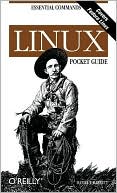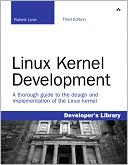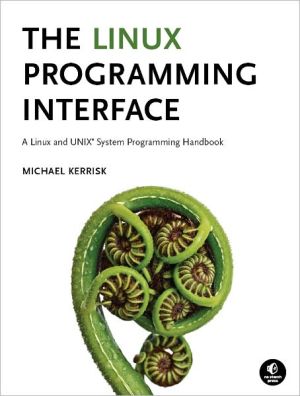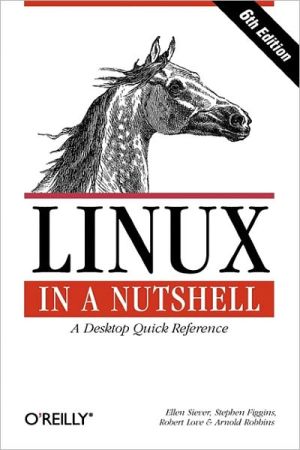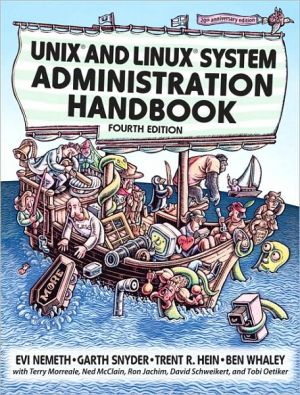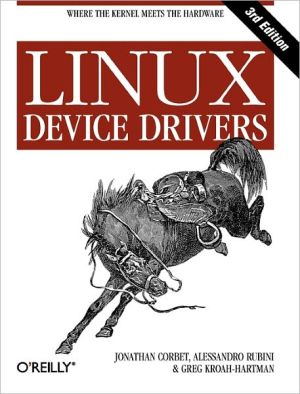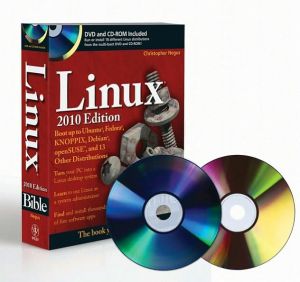Linux Pocket Guide
Search in google:
O'Reilly's Pocket Guides have earned a reputation as inexpensive, comprehensive, and compact guides that have the stuff but not the fluff. Every page of "Linux Pocket Guide" lives up to this billing. It clearly explains how to get up to speed quickly on day-to-day Linux use. Once you're up and running, "Linux Pocket Guide" provides an easy-to-use reference that you can keep by your keyboard for those times when you want a fast, useful answer, not hours in the man pages. "Linux Pocket Guide" is organized the way you use Linux: by function, not just alphabetically. It's not the 'bible of Linux; it's a practical and concise guide to the options and commands you need most. It starts with general concepts like files and directories, the shell, and X windows, and then presents detailed overviews of the most essential commands, with clear examples. You'll learn each command's purpose, usage, options, location on disk, and even the RPM package that installed it. The "Linux Pocket Guide" is tailored to Fedora Linux--the latest spin-off of Red Hat Linux--but most of the information applies to any Linux system. Throw in a host of valuable power user tips and a friendly and accessible style, and you'll quickly find this practical, to-the-point book a small but mighty resource for Linux users. Library Journal Linux's popularity continues to grow owing to its lower cost and better security. Multiple flavors and uses of the OS lead to multiple guides; those listed here mainly cover the popular licensed Red Hat Enterprise and freely downloadable Fedora, both distributed by Red Hat. Pocket Guide explains the common commands (organized by function), uses, and options of Fedora Linux, focusing on the command line; minimal attention is given to graphical interfaces. A succinct reference for larger libraries owning more comprehensive guides. For beginners, Learning Red Hat Enterprise addresses both Red Hat Enterprise and Fedora and includes the smaller publisher's edition of Fedora on CD. After an introduction and history, the book moves from installing the operating system to setting up networking and understanding shell scripts. This clear, well-organized guide is highly recommended for all libraries. For intermediate users, Linux Unwired mixes two hot topics in one short text, showing with humor and enthusiasm how to use Linux with several wireless protocols and standards, including 802.11, Bluetooth, cellular data, and GPS. The authors explain how wireless works as well as how to set up your Linux box for wireless and create your own access point. Given the increased popularity of both Linux and wireless in addition to the increased complexity of configuring wireless on Linux this is recommended for medium and larger libraries. Moving includes Knoppix on CD-ROM, which allows readers to run a Debian-based Linux distribution without installing it on their hard drives, plus open source application software. It targets Microsoft administrators wanting to switch their business networks to a Linux environment, covering both system administration for the most common distributions and applications (e.g., OpenOffice.org, Mozilla, and KOrganizer) and focusing on the KDE desktop; for larger libraries. For beginners, Beginning Fedora 2 contains the publisher's edition on DVD (or downloadable for readers without DVD drives). Step-by-step instructions, chapter summaries, and exercises help teach the OS. A little more comprehensive but less clear than Learning Red Hat; appropriate for medium and larger libraries. Copyright 2005 Reed Business Information.
What's in This Book?1Getting Help7Fedora: A First View9Logins, Logouts, and Shutdowns11The Filesystem13The Shell20Installing Software33Basic File Operations37Directory Operations41File Viewing43File Creation and Editing51File Properties56File Location65File Text Manipulation71File Compression and Packaging82File Comparison86Disks and Filesystems91Backups and Remote Storage95File Printing101Spelling Operations102Viewing Processes104Controlling Processes108Users and Their Environment110Working with User Accounts115Becoming the Superuser118Working with Groups119Basic Host Information121Host Location124Network Connections128Email132Web Browsing136Usenet News140Instant Messaging142Screen Output144Math and Calculations149Dates and Times152Scheduling Jobs155Graphics and Screensavers160Audio and Video163Programming with Shell Scripts166Final Words179Acknowledgments179
